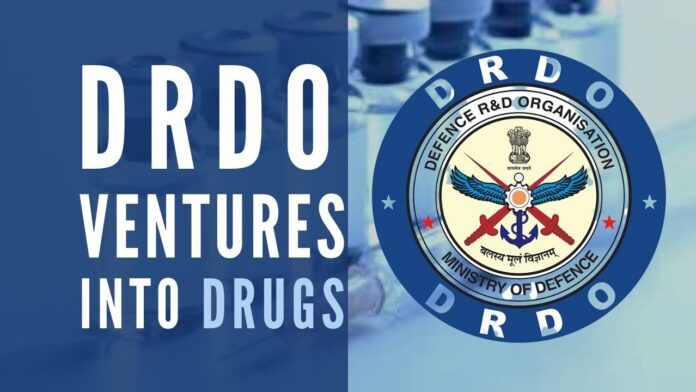
DRDO's 2-DG drug for COVID patients available from next week
As COVID-19 patients scramble for oxygen and medicines which are in short supply, the indigenously developed 2-deoxy-D-glucose (2-DG) drug, to be used as an adjunct therapy in the treatment of COVID-19 patients, will become available in India from next week.

As COVID-19 patients scramble for oxygen and medicines which are in short supply, the indigenously developed 2-deoxy-D-glucose (2-DG) drug, to be used as an adjunct therapy in the treatment of COVID-19 patients, will become available in India from next week. (An NDTV report said Union Home Minister Rajnath Singh would launch the drug today (May 17) by distributing ‘10,000 doses to some hospitals’ in the national capital).
Media reports said that a Defence Research and Development Organisation (DRDO) official told news agency ANI that the first batch of 10,000 doses of 2-DG medicine for the treatment of COVID-19 infected patients would be launched early next week and will be given to patients. The drug has been developed by a team of DRDO’s Institute of Nuclear Medicine and Allied Sciences, including Dr Anant Narayan Bhatt, in collaboration with Dr Reddy’s Laboratories.
The significance of 2-DG?
During the course of the pandemic, medical experts have tried out several drugs including Hydroxychloroquine, Remdesivir, Ivermectin to treat the infectious coronavirus disease, but 2-DG is the first one to be termed as an anti-COVID drug. Earlier this month, the Drugs Controller General of India (DCGI) had approved the emergency use of this oral drug.
It is to given as an adjunct therapy or an alternative treatment – to assist the primary treatment.
Also read: DRDO’s oral drug to treat COVID gets nod
According to a Hindustan Times report, the drug has been repurposed from the 2-DG molecule meant for treating tumour, cancer cells. A glucose analogue, it resembles glucose but it is not. As the virus multiplies rapidly in the body, it needs glucose for energy and as the virus takes this glucose analogue it will get arrested and stop it from multiplying.
Effect on COVID-19 patients whose oxygen levels are dropping
Clinical trials have shown that this molecule helps in the faster recovery of hospitalised patients and reduces supplemental oxygen dependence, said a statement by DRDO upon getting the DCGI nod. According to DRDO, the patients treated with 2-DG showed faster symptomatic cure than Standard of Care (SoC) on various endpoints in the efficacy trends.
On being able to help patients whose oxygen levels are dropping, the director of the Institute of Nuclear Medicine and Allied Sciences, Dr Anil Mishra told All India Radio, that one the process of the virus multiplying in the body is arrested, the oxygen crisis will also be addressed.
Also read: Know the strengths and weaknesses of DRDO’s COVID cure
This drug is also supposed to be effective against different variants. The pricing of the drug will be determined by Dr Reddy’s laboratories which is manufacturing the doses. Like glucose powder, this drug should be consumed with water, twice a day. A COVID-19 patient may have to take this drug for five to seven days to get completely cured. One sachet of the drug, to be stored below 25 degree celsius, will contain 5.85 gram of the drug.
The History
In April 2020, during the first wave of the Covid-19 pandemic, INMAS-DRDO scientists conducted laboratory experiments of 2-DG with the help of the Centre for Cellular and Molecular Biology (CCMB), Hyderabad. They found that this molecule works effectively against the SARS-CoV-2 virus and inhibits viral growth.
Based on the results, the DCGI had in May 2020 permitted Phase-II clinical trial of 2-DG in COVID-19 patients. In Phase-II trials (including dose-ranging) conducted from May to October 2020, the drug was found to be safe and showed significant improvement in the patients’ recovery.


